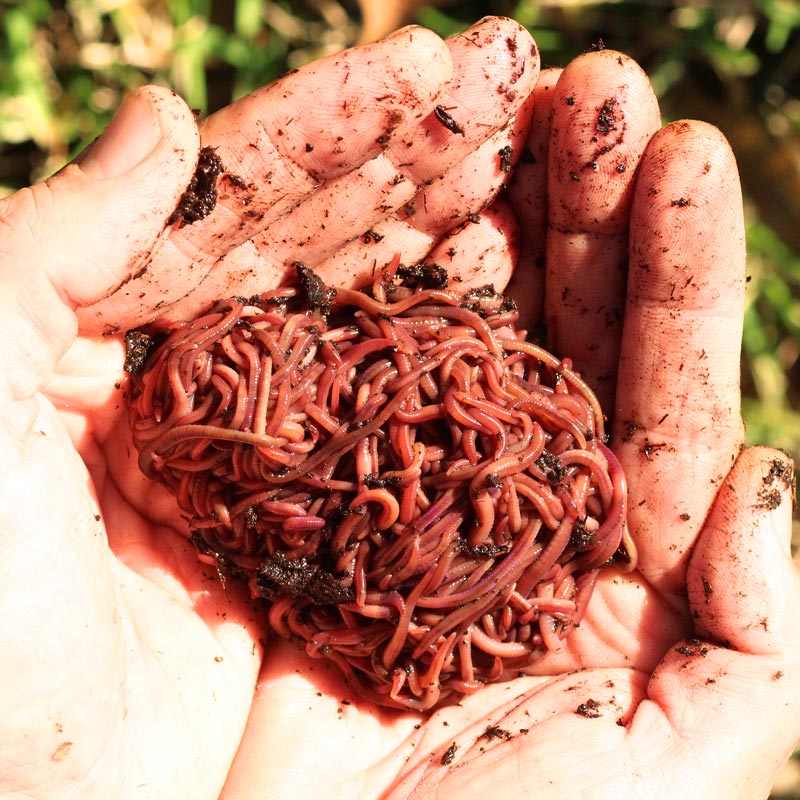Red Wiggler Worms - Perfect for Vermicomposting and Dirt Enrichment
Red Wiggler Worms - Perfect for Vermicomposting and Dirt Enrichment
Blog Article
Red Wiggler Worms Demystified: Unlocking the Keys of Vermiculture for Greener Living and Nutrient-Rich Dirt
In the realm of sustainable techniques for improving dirt high quality and promoting eco-conscious living, red wiggler worms play a critical yet usually ignored role. Red Wiggler Worms. Comprehending the ins and outs of caring for these worms, optimizing their atmosphere, and utilizing their spreadings can lead to a greener lifestyle and healthier soil for plants to thrive.
The Role of Red Wiggler Worms
Red Wiggler worms play an important role in composting systems by efficiently breaking down raw material into nutrient-rich castings. These ravenous eaters consume a variety of natural materials, such as kitchen scraps, backyard waste, and paper products. As they feed, the worms' digestive procedures damage down the raw material into a fine, dark, and nutrient-dense material called worm spreadings or vermicompost.
The spreadings produced by Red Wiggler worms are very advantageous for soil wellness and plant growth. They are abundant in crucial nutrients like phosphorus, nitrogen, and potassium, which are crucial for supporting healthy and balanced plant advancement. In addition, worm castings consist of useful microbes and enzymes that aid improve dirt framework, boost water retention, and boost nutrient uptake by plants.
Benefits of Vermicomposting

It boosts soil framework, enhances dirt aeration, and raises soil wetness retention. Vermicompost likewise enhances the dirt with vital nutrients like nitrogen, phosphorus, and potassium, promoting plant development and general soil fertility.
Additionally, vermicomposting assistances lasting gardening methods by providing a all-natural and chemical-free alternative to synthetic fertilizers. Red Wiggler Worms. This eco friendly approach not just enriches the soil but additionally assists minimize reliance on damaging chemicals, advertising a greener and more lasting method of gardening
Establishing a Worm Bin
When establishing a worm bin for vermicomposting, proper setup is crucial to make sure the success of the composting procedure. The first step in setting up a worm container is choosing an appropriate container.
After including the bed linens, present the red wiggler worms to the bin. The worms should after that be offered with food scraps such as fruit and vegetable peels, coffee premises, and eggshells.
Regularly check the dampness levels and temperature level in the worm bin to make sure optimal problems for the worms. With correct configuration and upkeep, the worm bin will properly convert natural waste into nutrient-rich compost for your plants and yard.
Gathering Worm Spreadings
To effectively accumulate nutrient-rich worm castings from your vermicomposting system, a systematic harvesting method is essential. There are a few key actions to follow to make certain a successful procedure find out here now when it comes time to harvest the worm castings. To start with, stop adding fresh food scraps away of the worm container for a pair of weeks before gathering. This encourages the worms to migrate to the side with fresh bed linens and food, making it simpler to dig the spreadings from the opposite side.

Troubleshooting Common Issues
Recognizing and dealing with typical challenges that might arise during the vermicomposting process is important for preserving a healthy and balanced and effective worm container. Adding excess food scraps can lead to a buildup of dampness and acidity in the worm bin, potentially hurting the worms. Another problem is undesirable smells originating from the worm bin.
Furthermore, if the worm population is declining or the worms show up harmful, maybe because of ecological stress factors such as severe temperatures or pH levels. Keeping see it here an eye on these aspects and making required changes is crucial for the wellness of the worms. By repairing these usual concerns without delay, vermicomposters can make certain a smooth and effective vermicomposting procedure while preserving a thriving worm populace.

Final Thought
Finally, red wiggler worms play a vital function in vermiculture by damaging down natural matter right into nutrient-rich soil. The benefits of vermiculture include greener living and improved soil quality. Setting up a worm bin is necessary for successful vermiculture, and collecting worm castings provides beneficial garden compost for horticulture. By comprehending and fixing common problems, individuals can open the keys of vermiculture for lasting living and much healthier soil.
As they feed, the worms' digestion processes break down the natural matter into a fine, dark, and nutrient-dense material known as worm spreadings or vermicompost.
The spreadings produced by Red Wiggler worms are highly useful for soil wellness and plant growth. Adding excess food scraps can lead to an accumulation of dampness and level of acidity in the worm bin, published here possibly harming the worms.Additionally, if the worm populace is declining or the worms appear unhealthy, it can be due to environmental stress factors such as extreme temperature levels or pH levels. Establishing up a worm bin is essential for successful vermiculture, and gathering worm spreadings gives valuable compost for horticulture.
Report this page